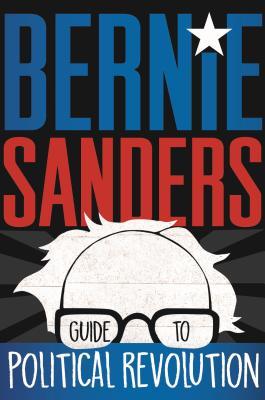Bernie Sanders Guide to Political Revolution
Bernie Sanders
Your rating:
Bernie Sanders Guide to Political Revolution
Bernie Sanders
In the Bernie Sanders Guide to Political Revolution, Independent congressman, presidential candidate and activist Bernie Sanders continues his fight against the imbalances in the nation's status quo, and shows you how to make a difference to effect the changes America--and the world--need to create a better tomorrow. Throughout the Presidential campaign, Senator Bernie Sanders promised voters a future to believe in through his progressive platform and a vision for America worth fighting for. This vision calls for an economic, environmental, health care, and social justice revolution beyond the stagnant agendas of Democrat and Republican politicians to build an equitable future for all Americans--especially the younger generation that will inherit the consequences of decisions made now. Inside this practical and inspiring guide to effecting change in today's world, you'll learn how to: - Understand and navigate the current system of policy and government- Work to change the system to reflect your values and to protect our society's most vulnerable- Organize for the causes you care about most- Resources for further reading and organizations to get involved with With more than two decades of Washington D.C. insider knowledge and experience, Senator Sanders knows how to fight and change the system from within, a system desperately in need of reform in health care, immigration, taxes, higher education, climate change, and criminal justice. The political revolution is just beginning. What role will you play?
Publication Year: 2017
No posts yet
Kick off the convo with a theory, question, musing, or update
Your rating:
A thorough, albeit biased, introduction to current US politics for high school aged students. The problem I found with it is that it's titled to be a "guide" to political revolution but only spend a single page per chapter explaining what readers (who are assumed to be under the legal voting age) can do to help. It reads more like a lecture than a guide. Although, I did appreciate that it wasn't straight text, which I guess is how you can tell it's meant for a younger audience. Since it features frequent pictures and graphs explaining the main points and breaks the texts into smaller subsections, it would also be good for college-age students and older who want to see the leftist side of politics but are completely new to the topic and/or have trouble focusing.
